#difference between western astrology and vedic astrology
Text
Which is more accurate vedic or western astrology
Modern western astrologers are more psychologically oriented. Modern western astrology is being majorly used to define a person’s characteristics based on their birth date.
Vedic astrology gives us insight into karma and the drama of a person by being a torchbearer to the concepts of past life’s effects, karmic debts, challenges, and purpose for the present life.
To know more about the difference between Vedic and Western astrology, Click Here -
#difference between vedic and western astrology#difference between western astrology and vedic astrology#which is more accurate vedic or western astrology#is vedic astrology more accurate than western#vedic astrology vs western
3 notes
·
View notes
Text
WESTERN ASTROLOGY – THE ORIGINS AND FACTS ABOUT WESTERN ASTROLOGY
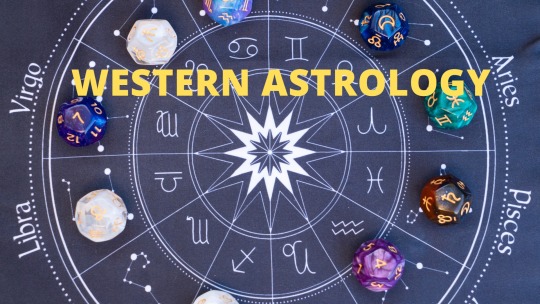
Western astrology is a system of divination based on the position of the planets and stars at the time of a person’s birth. It has its roots in ancient Babylonian astronomy and was later developed by the Greeks and Romans. Western astrology uses a zodiac system that divides the sky into twelve sections, each represented by a different astrological sign. Each sign is associated with certain characteristics and traits, and the position of the planets and stars at the time of a person’s birth is believed to influence their personality, relationships, and life path. Western astrology can be used for personal guidance, relationship compatibility, and even predicting future events. While some people view it as a form of entertainment, others take it very seriously and use it as a tool for self-discovery and personal growth.
Read full Information Source Link
#astrology#western astrology#vedic astrology#hindu astrology#indian astrology#sidereal astrology#best astrology#western astrology lessons#vedic vs western astrology#western astrology lecture#vedic and western astrology#history of western astrology#difference between eastern and western astrology#western astrology vs vedic astrology#vedic astrology vs western astrology#gregorian calendar western astrology#natal astrology#the astrology podcast
2 notes
·
View notes
Text
Why Is Vedic Astrology better than other types of Astrology?
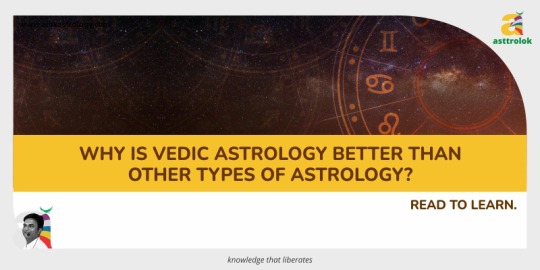
There are three main types: Vedic, Chinese, and Western (Tropical). Within each one, there are further specialised astrology types.
Know about the different types of Vedic Astrology. Get an online astrology consultation by the world-renowned Astrologer Mr. Alok Khandelwal.
Western Astrology
Between 2,000 and 3,000 years ago, the Greeks and the Babylonians invented Western astrology. They held that the relationship between the Earth and the Sun is extremely important since the Sun is the Solar System’s center of gravity. The Tropical Zodiac—which includes the Tropics of Cancer and Capricorn—is what truly determines how close the Sun is to the tropics of the Earth. The 12 Western signs also include Ram, Bull, Twins, Crab, Lion, Virgin, Scales, Scorpion, Centaur, Sea-Goat, Water Bearer, and Fish.
Chinese astrology system
Two of the five elements of the Chinese astrology system are distinct from those in Western astrology, but all five are connected to powerful forces in your life, much like the Western concept. Each element is related to a birth year. For instance, people born under the influence of fire, earth, or metal elements are driven to excitement. In contrast, those born underwater, metal, or wood elements are drawn to emotional attachments and the security that security provides. Rat, Ox, Tiger, Rabbit, Dragon, Snake, Horse, Goat, Monkey, Rooster, Dog, and Pig are among the 12 signs in Chinese astrology.
Read Also:- Akshaya Tritiya 2023: Its Significance, Story, and Puja
Vedic astrology (Jyotish)
Literally translated, Vedic astrology (Jyotish) is “the science of light.” The Vedas, one of India’s oldest spiritual texts that date back to roughly 1,500–2,000 BCE, is the source of Vedic science. Vedic astrologers are well known for their spiritual wisdom as well as their ability to predict the future with precision. This is a closer look at Vedic astrology, which differs greatly from both Western and Chinese systems.
Indian or Hindu astrology is the ancient name for the discipline; Vedic astrology is the current label given to it by Vedic astrologer David Frawley. The planets are regarded as the soul’s karmas in Vedic astrology. Karma is actually the main focus of Vedic astrology because it can have either positive or negative effects based on our previous life.
As was already established, karma can have both positive and bad meanings, but the good news is that the planets can help to balance karmic activity by easing suffering and assisting a person through a trying time so that progress can take place.
As was already established, karma can have both positive and bad meanings, but the good news is that the planets can help to balance karmic activity by easing suffering and assisting a person through a trying time so that progress can take place.
As was already mentioned, Vedic astrology uses the Sidereal zodiac, which is “pertaining to the stars,” as opposed to Western astrology, which uses the Tropical zodiac. The link between the planets and the zodiac star constellations is the foundation of the sidereal system. Every 72 years or so, these fixed stars rotate or gently move toward the Earth.
Unlike some of the other types of astrology, Vedic astrology does not consider the angle between the earth and the sun to be an appropriate way to measure the signs. This is due to the precession of the equinoxes, which essentially requires the signs to move backward one day every 72 years in order to maintain their correct astronomical alignment.
The use of planetary periods of influence is one of the best features of Vedic astrology. This is crucial because these times can be quite useful for generating forecasts. It is simple for a reader to provide specifics on how a person might anticipate living during a planetary period by looking at a planet’s chart (sign, house, conjunctions, aspects, house lordship, and strength). Each period is further broken down into shorter sub-periods that can last up to three years, resulting in a stronger and longer prediction. This might relate to one’s future job, romantic relationships, health, and other things.
If you wish to know more about Jyotish or want to resolve personal problems, you can get a free online consultation with our world-renowned astrologer, Mr. Alok Khandelwal.
#Chinese astrology system#Differences between Western & Vedic#talk to astrologer#types of Astrology#vedic astrologer in usa#Vedic astrology#vedic astrology consultation#Vedic astrology predictions#vedic astrology usa#Western & Vedic Astrology#Western Astrology#astrology#asttrolok
1 note
·
View note
Photo

Difference Between Vedic Astrology vs Western Astrology | Monkvyasa
What is the difference between vedic and western astrology? Here's an explanation the major differences between Vedic astrology and Western astrology. Read now!
#Vedic Astrology#Western Astrology#Vedic Astrology vs Western Astrology#Differences Between Vedic Astrology and Western Astrology#Vedic vs Western Astrology
0 notes
Text
𝟷𝟶 𝚏𝚞𝚗 𝚏𝚊𝚌𝚝𝚜 𝚊𝚋𝚘𝚞𝚝 𝚊𝚜𝚝𝚛𝚘𝚕𝚘𝚐𝚢

1. sign ≠ house- the reason this is, is because they both have their own characteristics and also represent different meanings. the signs represent more of a personality and the houses represent aspects of your life. they correspond but they aren’t the same thing. this is because when you think about it, aries has qualities such as leadership and impulsivity, but the 1st house doesn’t represent those things. therefore they’re not the same thing. when you see post that say aries/ 1st house, it’s usually because they try to add aspects of both placements
2. there’s multiple kinds of astrology- most people that live in america follow western astrology, but there’s vedic astrology which is said to be the most accurate, chinese astrology, medical astrology, and more. they are all different but also similar and some ways
3. there’s multiple charts in astrology- this is one of my favorite parts about astrology but it can also get confusing lol. there’s your natal chart, which everyone knows about, but then there’s persona charts, transit charts, progressive charts, draconic charts and more. then synastry and composite charts which takes 2 people’s birth information to create
4. asteroids- you don’t have to only learn about planets, you can learn about asteroids too. asteroids usually fall between 2 planets, which somewhat helps form a personality for them. not all of them though, some of them are in the outskirts of our solar system and some have meanings that don’t necessarily relate to the planet it’s closest to
5. there’s thousands of asteroids- there’s so many asteroids out there, that have been discovered with in depth meanings, some that have been discovered with no clear meaning, and obviously some that still aren’t discovered. that’s why there’s so many different elements to your chart, and so many different things can dictate your personality in a natal chart

6. greek mythology and astrology- greek mythology and astrology have a lot of points where they correlate. especially with asteroids, if you read into greek mythology, you will start to understand why certain asteroids and placements mean the things they do
7. cusp- if you believe in degrees in astrology, then you don’t believe in cusp. cusp basically means when you were born “between” 2 signs. so people born on may 20th or 21st could say they’re a taurus/gemini cusp, but that’s not true if you believe in degrees. degrees can go from 0 to 29
8. no such thing as a bad placement- no placement is bad, some are just harder to deal with than others and that’s okay. it doesn’t mean parts of you or bad or that your cursed for the rest of your life. everyone has rough edges, you just have to smooth them out if that makes sense lol
9. astrology and tarot- some major arcana cards actually represent the zodiac signs. not all of them but about half of them do. like gemini is the lovers, aquarius is the star, libra is judgement, and so on
10. empty houses- technically no house is empty because like i mentioned earlier, there’s thousands of asteroids out there, and all of them fall in a house. but as for your natal chart, having an empty house doesn’t mean anything negative, it just means that’s an aspect of yourself you don’t really need to focus on or pay attention to, or nothing is really going to happen in those areas of life. if you have an empty 4th house it can mean that nothing significant or out of the ordinary or specific is going to happen to your family or children. i hope that made sense 💀
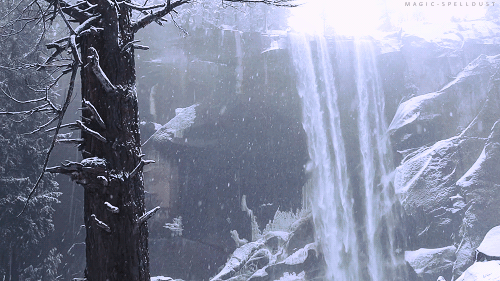
#astro community#astro observations#astro placements#astro posts#astrology#zodiac shit#gemini#capricorn#aries#scorpio#astrology ask#astrology community#astrology notes#astrology aspects#astrology stuff#astro notes#astrology chart#natal astrology#astrology signs#astroblr
229 notes
·
View notes
Note
debunking some 12th house placements / stelliums in composite houses? usually ive seen people here say there’s usually an expiry date with those placements but vedic astro has a different say!
© Numerologica 2024 all rights reserved, this article is protected by copyright norms, do not copy, repost, rewrite in any way or you'll be sued for copyright infringement.

First and foremost: I don't know much about vedic astrology as my personal education is based on western/hellenistic, so I can't tell what vedic astrology has to say with 12H Placements/Stelliums in Composite, but I definitely can tell you what my education & experience taught me.
(¹) Difference Between Western and Vedic Astrology - Saurav Chaturvedi
(²) What's Hellenistic Astrology - Chris Brennan
● WHAT'S A COMPOSITE CHART?
⎯ A Composite Chart is basically the fusion of two [or 3+ at times] charts together, and it indicates the general energy of a relationship, without taking into account the individuals as synastry does.
⎯ Unlike Synastry that indicates the dynamics of interaction between two [or 3+ at times] people and their general compatibility, Composite Charts kind of show the outcomes of this interaction, it's like a third component to the relationship.
⎯⎯⎯⎯⎯⎯⎯⎯⎯⎯⎯⎯⎯⎯⎯⎯⎯⎯⎯⎯⎯⎯⎯⎯⎯⎯
read this: the Composite Chart by the astrologer Liz Greene.
" When we are looking at a composite chart, we are not exploring what two people activate in each other or feel about each other. We are interpreting the energy field they generate between them. The composite chart is like a child, a third entity which carries the genetic imprints of both parents but combines these imprints in an entirely new way and exists independently of either of them. "
~ Liz Greene, The Composite Chart
⎯⎯⎯⎯⎯⎯⎯⎯⎯⎯⎯⎯⎯⎯⎯⎯⎯⎯⎯⎯⎯⎯⎯⎯⎯⎯
● WHAT'S THE 12H ABOUT?
(³) The 12th House - AstroTwins
All I'm writing below is based on these books from professional, experienced and reliable astrologers: Hellenistic Astrology by Chris Brennan, The Twelve Houses by Howard Sasportas, Ancient Astrology by Demetra George and The Contemporary Astrologer's Handbook by Sue Tompkins.
⎯ it is about the unconscious, behind the scenes activity, secrets, spirituality, hiding, secret enemies, hidden things, mystery, mysticism, psychic abilities, restricted spaces such as hospitals and jails, grief, healing, enlightenment, transcendence, dreams, confusion and at times even illusion, altered perception of things/reality, hypnosis, magic, self-undoing/self-destruction/self-healing, addiction, sacrifice, dependency over things/people, escapism, the holistic world, enigmas, sorrowful experiences, things that don't seem real, seclusion, loneliness, confinement, charity.
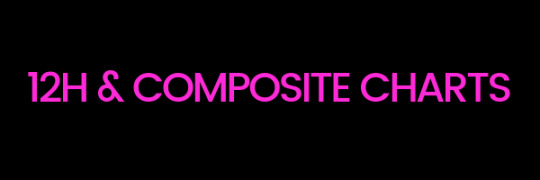
doesn't matter how romanticized these placements may be by tiktok/pop astrologers, it is astrologically and realistically more correct to say that 12H Placements in Composite Charts especially Stelliums could be a bit hard to handle due to the complex nature of the 12H and also potentially the complex nature of the planets involved (ex. Mars/Pluto/Saturn/Uranus). Is this relationship destined to be a disaster? Not necessarily. Is it destined to fail? Not necessarily.
⎯⎯⎯⎯⎯⎯⎯⎯⎯⎯⎯⎯⎯⎯⎯⎯⎯⎯⎯⎯⎯⎯⎯⎯⎯⎯
[ ⚠ ] DISCLAIMER : the entire chart must be analyzed as well, always.
⎯⎯⎯⎯⎯⎯⎯⎯⎯⎯⎯⎯⎯⎯⎯⎯⎯⎯⎯⎯⎯⎯⎯⎯⎯⎯
● POSSIBLE EFFECTS of 12H PLACEMENTS/STELLIUMS in COMPOSITE
⎯ Having a secret relationship or having a lot of secrets while in a relationship
⎯ Being very devoted to each other to the point of having a mystical/spiritual relationship
⎯ Being overly sacrificing, both or one of the partners involved may give more than take and find him/her/themselves frustrated because of it
⎯ Refusing to see your partner's flaws or face your relationship problems for the sake of keeping the "perfect and unconditional love"
⎯ Having an idealised view of each other, or one having an idealised view of the other partner. This can result either in deep admiration or a toxic "I put you on a pedestal" thing
⎯ Having a lot of unresolved karma together, maybe from past relationships or past situations
⎯ Cheating (I know it's a hard pill to swallow but it can happen), due to secrets/idealisation of the partner to the point of possibly overlooking his/her/their behaviour and actions.
⎯ Being "addicted" to one another, both positively or negatively
⎯ Healing together, having a religious relationship where you both practice the same form of spiritual activities or religion
⎯ Deep, intimate and exclusively private bond with someone who's able to see your darkest side, your "hidden world", almost telepathic connection
⎯ Issues with communicating or communicating emotions
⎯ Feeling alone, restricted or imprisoned in the relationship
⎯⎯⎯⎯⎯⎯⎯⎯⎯⎯⎯⎯⎯⎯⎯⎯⎯⎯⎯⎯⎯⎯⎯⎯⎯⎯
MASTERLIST
© Numerologica 2024 all rights reserved, this article is protected by copyright norms, do not copy, repost, rewrite in any way or you'll be sued for copyright infringement.
#numerologica#astrology#western astrology#astro community#astroblr#astrology blog#birth chart#natal chart#composite chart#synastry#debunking#debunking observations#12th house#12th house placements#12th house composite#12th house composite chart#composite
56 notes
·
View notes
Text
Thinking about how in Vedic astrology, Mars definitively rules both birth and death because it is understood that these are two sides of the same coin, all part of the chthonic cycle, the different modes of transference between life as we understand it and that which exists beyond it, which is why it's always our gateway to the outer planets
Whereas in contemporary Western astrology, we've taken the outer planets and assigned a whole new object the domain and powers of death, trying to force a distinction between experiences of passion, anger, and the body (by giving Mars rulership over Aries and the 1st house), and the realities of sex, violence, and death (by assigning Pluto rulership over Scorpio and the 8th house)
#mars#pluto#vedic astrology#western astrology#astroblr#mine#authored#planets#rulership#tandem astrology
33 notes
·
View notes
Text
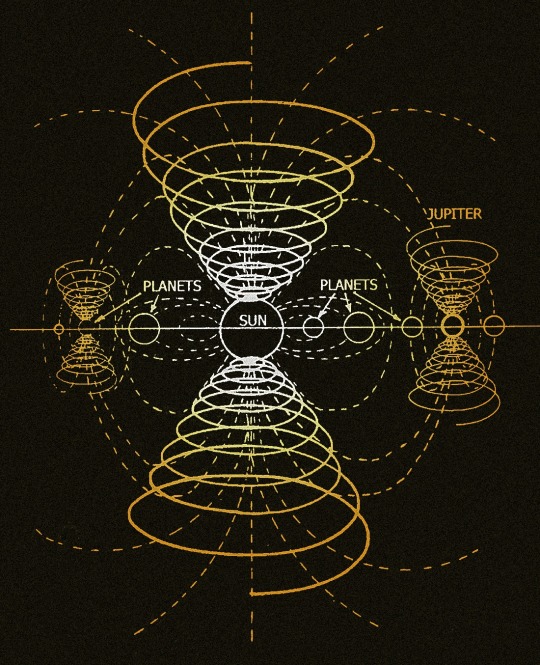
Think of it in terms you are the sun and the planets are energy points, energy centers, access points, dimensions, chakras, different bandwidths to access within the same energy.
--collectiveconsciousness
@conciouscreator
This differs somewhat between Western and Vedic astrology, but the best guideline for the chakra/planet rulership is found in Yoga:
Root Chakra - Mars and Saturn - “I am”
Sacral Chakra - Venus, Pluto, Jupiter - “I create/I feel”
Solar Plexus Chakra - Sun, Mars - “I do/I relate”
Heart Chakra - Moon, Venus - “I love/I connect”
Throat Chakra - Mercury - “I speak/I communicate”
Third Eye Chakra - Saturn, Neptune, Jupiter - “I see/I perceive”
Crown Chakra - Jupiter, Uranus - “I know”
You must activate your chakras by light (visualization). Imagine lighting seven stars in the sky with gold fire. Then we twist (with an Imaginary finger) the third chakra (in the Abdomen) clockwise on our body.
32 notes
·
View notes
Text
Vedic Astrology 101.

What is Vedic astrology?
vedic astrology is an old Indian science practiced for more than 5000 years ago with the objective of studying one's personal harvest gain, wedding, and overall daily activities. It was not originally intended to judge one's character or predict his life.
the proper name of Vedic astrology is: "Jyotisha or Jyotishya (from Sanskrit jyotiṣa, from jyót “light, heavenly body"), It is one of the six auxiliary disciplines in Hinduism that is connected with the study of the Vedas." ( vedas are a large body of religious texts originating in ancient India )
this means that vedic astrology is deeply intertwined with Hindu philosophy and spirituality but that doesn't mean one must be a converted Hindu to be able to study and enjoy the art of vedic astrology.

Difference between vedic and Western/tropical astrology :
for now, i will not go deep into the main differences between both systems i will only highlight the difference in system (zodiac) utilization and the overall most important details.
Vedic astrologers, use the Sidereal Zodiac, that are calculated planetary positions based on the fixed locations of the stars in the sky. However, due to the precession of the equinoxes, Indian astrologers adjusted their calculations to keep in sync with the stellar positions. Thus, their system is known as sidereal, or star-based.
Western / Tropical astrology, on the other hand, uses the tropical (fixed) zodiac. This system relies on four seasons that represent the Sun’s movement, equinoxes, solstices, as well as the tilt of Earth on its axis.
vedic will utilize the "whole house system" instead of "Placidus" system meaning that each sign will occupy one whole house instead of only a cusp of a certain house
vedic will also not count the outer planets also known as "pluto ,uranus and Neptune" because those planets are used by the westerns to replace a shadow "imaginary point" called rahu and ketu (lunar nodes) that bring the same "effects" ... although a few astrologers will continue to use the outer planets for transit purposes despite them not being part officially of the vedic astrology approach because those planets are way distant of the earth and don't provide enough evidence of their effect upon affecting someone's life yet for those who choose to include on their overall analyses will use the outer planets as one of significator of generational impactful changes and behaviors ( this will be expanded on a post focusing on the outer planets)
also along with the outer planets, the sideral zodiac doesn't use the asteroids as well!.
and the Vedic considers the moon as the most important planet because the moon is the one responsible for the mind's emotions behavior mood instincts emotional overall state, and feelings. the moon represents our inner self and the sun our outer self.

The houses :
each house has their respect sign ruler and planet ruler :
aries - mars
taurus - venus
gemini - mercury
cancer - moon
leo - sun
virgo - mercury
libra - venus
scorpio - mars
Sagittarius - jupiter
capricorn - saturn
aquarius - saturn
pisces - jupiter

hi thank you for reading until the end ;) i will make a part 2 and 3 and will also link the parts here once i post them :)
part 2.
linktree.
#vedic astrology#sideral astrology#astrology101#vedicastrology#sideral#vedic astro notes#vedic astrology notes#astrology
45 notes
·
View notes
Text
planetary enemies
we often talk about what signs and houses planets are happy or powerful in. we don't always talk about who they get along with and don't. the concept of planetary enemies seems to be more prominent in vedic astrology than in western varieties, but even then there are some variations on which planets are not really friends. so a caveat here is that i am not by any means a vedic astrologer, i know a bit about it but my involvement there is extremely casual.
mars and venus - not everyone agrees that these are enemies, for sure. indeed mythologically (to the greeks and romans at least) they were lovers. on the other hand, who doesn't occasionally fight with a lover? and being love and war they are naturally at odds even if they are things often found together (all's fair in love and war, etc)
sun and saturn - this is a classic, that saturn is the greater malefic with sun being its remedy or antidote. in a heavy depression wear gold, be outside in the light, etc. it goes kind of the other way too, a lead weight does tend to detract from a bright sunny day.
sun and venus - this is more of a vedic thing and not everyone follows it but i was shocked to see it. of course in some forms astrology anything too closely conjunct the sign is a bit scary, but i always saw the sun and venus as kind of beautiful, heartful allies. maybe they get competitive with each other.
mercury and moon, but not vice versa from what i have found - i guess this kind of makes sense, mercury is the mind, the moon is the feelings. i like to do my best to reconcile these things and integrate them but i know so many people who prefer to compartmentalize them, or ally with one more than the other.
mars and mercury - while i wouldn't normally interpret these as being adversarial i can see how there would be conflicts. mars charges forward and mercury plans and plots and schemes. i do also definitely associate aspects between them as often leading to verbal altercations.
jupiter and venus - this one i just can't really get behind. the worst that could happen here is huge appetites, greed, overindulgence, but i feel like that's because they get along too well!
jupiter and mercury - also interesting/strange to me as i see them both as quite compatible. especially when it comes to money. the combination is the building of wealth and then its good use in exchange and flow. the wealth can be money or knowledge or any other commodity. but in vedic forms of astrology i think this tends to be interpreted a bit differently, which may be at the root of this.
apparently the moon knows no enemies - i was surprised at this because at least in most western astrology the moon is (and in the past especially was) seen as so capricious and changing, it is hard to get along with that for many types of people. yet the moon is ultimately how we are all nurtured so i like the thought that our nurturing can never harm us.
what do you think?
25 notes
·
View notes
Note
Hi Julia~❄️ loving your work !! 💙
I'd like to know about Astroid Regulus in Leo 29° in positive aspect with Mercury, Neptune & Chiron.
Thank You! 💙
Fixed Stars in Astrology

Navigation: Masterlist✦Ask Rules✦Feedback Tips
Askbox✦Sources✦Paid Readings

Hi Siren!
So, Regulus is a fixed star and not an asteroid and fixed stars are not commonly used in western astrology and so I can explain what they are, but I am not going to do a in deep post about them into it because I don't qualify as a the best source on the subject (there's a module extra at my school on the subject but I still can't do it 😅).
1. What are Fixed Stars and How They Work:
Fixed stars are distant celestial objects in the night sky that appear to be stationary relative to each other and form the background against which the planets and other celestial bodies move. They are considered "fixed" because their positions change very slowly over time, about 1 degree every 72 years. Fixed stars are grouped into zodiacal and non-zodiacal constellations. These constellations have mythological narratives associated with them, known as catasterisms, which vary across cultures. These stars were traditionally an integral part of astrology, lost some significance over time, but are now regaining importance in astrological interpretation in the western astrology, as far as I, Julia, know, it has always had its place in Vedic astrology..
2. Different Cultures and Narratives:
Different cultures have unique narratives associated with the constellations. Even cultures with limited contact have narratives that share similarities, indicating a shared human connection to the stars. Western astrology often uses Greco-Roman mythological narratives for interpretation, incorporating elements from other mythologies as well.
3. Benefic and Malefic Fixed Stars:
Fixed stars can be classified as benefic or malefic based on their astrological influences. For example, Algol (β Persei) is considered one of the most malefic stars, associated with challenging and intense energies. In contrast, Spica is considered one of the most beneficial stars.
4. Precession of the Equinoxes and Positional Changes:
The precession of the equinoxes causes gradual shifts in the positions of stars and constellations over long periods of time. This phenomenon impacts the positions of stars in relation to zodiac signs and constellations, which can lead to differences in interpretations between traditional and modern astrology.
5. Astrological Implications:
Fixed stars can be used in horary astrology to provide insights into future events and projects, particularly when they align with significant points in the chart, like the Sun's conjunction with Regulus in Virgo. They offer indications about qualities such as authority, generosity, courage, and more.
6. Finding Fixed Stars in Your Birth Chart:
The positions of fixed stars in your birth chart are determined by factors such as their brightness, size, and their alignment with key points like the Ascendant, Descendant, Midheaven, and Imun Coeli. Astrologers use methods like the Ptolemaic method to calculate these positions and offer insights into an individual's life and traits. But since I know you're not going to do the calculations by hand, you can look up fixed stars on astro.com or on my favorite program Pegasus (this program has a very early 00's interface, but it calculates very well and has the option in english and other languages).
Extra Sources:
Estrelas fixas na astrologia: o que é, quais são as de cada signo e mais!
Estrelas fixas: o que são e como são usadas na Astrologia
Estrelas Fixas no mapa astral
(CC) AstroJulia Some Rights Reserved

#astrojulia#astrology#witchblr#astroblr#all about astrology#astro community#astro observations#astrology notes#witch community#astrology basics#fixed stars#natal chart#birth chart
71 notes
·
View notes
Text
LIVESTREAM: ASTROLOGY- Differences between Western & Vedic Astrology

SAT, DEC 30 · 5:30 PM PST
https://www.meetup.com/hekatisnetwork/events/297876549/
I'm participating in my first Youtube Livestrean Today! You can also watch it after the event is finished if you can't make it during the scheduled time.
#astrology#astro observations#astro community#astro notes#astrology observations#birth chart#natal chart#astro tumblr
21 notes
·
View notes
Text
liam's upapada lagna
in vedic astrology, there’s a concept of upapada lagna (UL) – a segment of the natal chart that reveals the native’s spouse. the spouse in this case does not necessarily mean the person one has legally married – it means the person the native feels in their heart is their other half, the person the native loves and *wants* to marry and feels married to in their heart. if liam’s floating-around-the-internet-birth-time of 12:58 p.m is correct, his UL is in the 3rd house, the house of siblings. the house is in makara (capricorn for westerners - but be mindful of the difference between the tropical and the sidereal zodiac), occupied by rahu (=north node, the effect of which is making the native obsessed with whichever part of the chart rahu touches, but in an unhealthy/abnormal way. just an example: rahu in the first house of self is likely to make the native obsessed with their self, image and looks, but in a way that is perverse and socially unacceptable. rahu is both ambitious/greedy as well as anti-social/rule-breaker).
the original UL correlates with the 1st marriage partner. if the native falls in love with/marries a new person, the UL moves 8 houses from its original spot, signifying the end of the relationship with the original UL person.
when trying to understand the nature/personality of the native himself, vedic astrology looks at the placement of the moon and, to a lesser degree, the lagna and its lord, and the sun. on may 29, 1967 (noel’s birthday), the moon remained in makara (liam’s UL) up until 8:30 p.m, which is liam’s UL. because of this, i’m pretty confident noel was born before 8:30 p.m. oh and his sun falls into liam’s 7th house (the default house of marriage in any chart).
10 notes
·
View notes
Note
Hello! I've been trying to learn and study verdic astrology for a while now, but can't seem to find the time for it, so your observations and overall all your posts have been incredibly helpful in helping me understand more of the concept(?) and the stories behind each nakshatras that you've been writing about. Though I do have some questions about certain things that I've been trying to find answers for, but whenever I try to find those answers, it seems like there's not much informations about them. Some had sufficient details but it was harder to grasp the exact answers I've been looking for. So I decided maybe I could find those answers from you! Although I'm in no way part of your culture, with how much I've come to understand myself more through your researches made me all the more interested in spirituality and verdic astrology itself! There are questions I've come to be more curious about and would like to hear your thoughts on them!
I'm meaning to find the difference between tropical and sidereal astrology. Though I don't exactly grasp whether or not tropical is the same as western astrology or are they the same thing?
This thus then begs the question whether tropical chart placements can relate to sidereal nakshatras placements. I've been seeing (more like read) that you often mention that if you have these nakshatras placements in tropical, they can have certain relevance or influence since some nakshatras share a sign or stay in only one sign in tropical (I don't really get whether the tropical chart that I searched for is really tropical cause it particularly looks the same as the western chart)
If so (that tropical placements can share similar characteristics to nakshatras at sidereal) to what extend does this influence apply?
If you do answer to these questions of mine, thank you very very much! For making time to answer these questions as well as answering them and would likely satiate my immense curiosity about these topics! Your works have been immensely beautiful and I hope there are more researches to come from you! Have a great day! 😊🌷
thank you, im glad my posts have been helpful!!
these are really good questions and i feel like it will help many people clear misunderstandings or understand things better, so here it goes:
is tropical the same as a western birth chart?
pretty much yes. there are many different types of astrology systems (hellenistic, vedic, islamic etc all based on cultural variations) and there's also draconic, horary, harmonic etc
tropical and sidereal astrology differ in terms of how the zodiac is mapped. tropical astrology does not take the concept of axial precession into account. the sun does not return to the same point in the sky every year.
tropical uses fixed stars whereas sidereal take into account the current position of stars. this is why they say tropical is more simplified and sidereal presents a more holistic view of things.
2. i do think tropical and sidereal are two halves of a whole. tropical astrology provides a very simplified overview of the psychology and attributes of different signs whereas sidereal helps us gain a deeper understanding of who we are.
i think its hard for some people because they deeply identify with being a leo for example and realize that actually they're sidereal cancers, the tropical chart kind of represents your ego and external attachments and sidereal shows your hidden/repressed/shadow side. ive heard many people say that it was a journey to go from heavily identifying with their tropical chart and feeling disconnected to their sidereal chart to eventually coming to terms with and embracing it and in turn those parts of themselves. its like doing shadow work. but this is just my personal opinion
i say that even tropical placements can relate to some of the sidereal takes because i dont think you cease to be the person you are just because you switch systems. if you're a tropical pisces and a sidereal aquarius, its possible and alright to feel drawn to pisces energy or both those energies. since its essentially based on how we're looking at the positions of these stars in the galaxy, we can't really say what we feel connected to or what we dont. astrology is not a perfect science. there are elements of pisces in aquarius, of aries in pisces and so on and so forth. its best to not think in arbitrary terms because all of us have many influences that shape us.
idk what you meant by tropical chart looking the same as a western chart bc theyre the same😭😭😭
3. i feel like i answered this above but like i said i feel like everything is a meeting point of many different energies. like Revati (since we're in Revati season) belongs entirely to Sidereal Pisces rashi but i definitely associate the tropical fire sign chaos with it because they're tropical Aries'. obviously this is just how i think of and perceive them. I think it also has a lot to do with how the elements are perceived in tropical vs vedic. In tropical astrology water is mostly understood as this tranquil, reflective, moody energy but in Vedic there is more complexity to every element and a lot of emphasis on the destructive nature of water (UBP, Ashlesha, Jyeshta etc all fall into water rashis) even fire is understood not only as severe and dynamic but also purifying with its scorching heat.
Revati is the birth nakshatra of Saturn, the exact exaltation point of Venus and is Mercury ruled in Pisces rashi which is Jupiter ruled, so that's like 4 different influences right there lol
i know ive used sidereal and vedic interchangeably throughout this post but just wanna say that vedic astrology uses the sidereal system of looking at the stars. but obviously vedic astrology is a whole separate system rooted in indian culture and hindu mythology etc (its like how milk is used to make ice cream, milk is not ice cream but it is USED to make ice cream, if that makes sense??)
also usually i feel like whatever major placements you have in tropical somehow shows up in vedic too?? like if you have a stellium in say virgo, maybe in vedic you have a mercury ruled nakshatra in your big 3. i feel like the overall influences/themes etc often repeat themselves but obvi there will be variations too
youre welcome!!<33 hope u have a good day too bestie<33tysm for reading this far<3
15 notes
·
View notes
Link
What is the difference between vedic and western astrology? Here's an explanation the major differences between Vedic astrology and Western astrology. Read now!
#Vedic Astrology#Western Astrology#Vedic Astrology vs Western Astrology#Differences Between Vedic Astrology and Western Astrology#Vedic vs Western Astrology
0 notes
Text
What should we prefer, Vedic astrology or Western astrology?
Astrology is used for helping human from suffering through the practice of religious rituals. You can get over your grief with the help of science and art. Vedic astrology and Western astrology are the two main subtypes of astrology. They not only have diverse origins, but they also have some additional differences. However, the major goals of astrology, whether it be Vedic or Western, are to reduce troubles and improve happiness. Here, we'll outline some key distinctions between Vedic and Western astrology. After realising and comprehending this, you cannot help but praise these two astrology systems.
What is the difference between the best Western astrology?
People can solve all of their difficulties and learn about the future through astrology. The Veda Puranas also cover astrology. It is believed that astrology is a tool that guides us from darkness to light, yet its application is rather broad. In astrology, there is also Vedic or Western astrology.
The Sun sign is the foundation of western astrology, whereas the Moon sign is used in Vedic astrology. This entire system of astrology revolves around these two. Let us first explain that astrology is a discipline and that Vedic astrology and resultant astrology are similar to it before describing the differences between the two. Numerous distinct astrology techniques are still used today.
What is Vedic Astrology
The Sanskrit word for Vedic astrology, or Hindu astrology, is jyotiṣa, loosely translating to "light/heavenly body," and the modality seems to have first appeared in the Rigveda, an ancient Indian text (though some assert it's been around since 10,000 B.C.).
It is believed that this is one area of astrology that evolved throughout the Vedic era while discussing Vedic astrology. This time period has seen the greatest advancements in human civilisation, particularly in the Indian subcontinent. It is believed that astrology must have been written at the same time. The study of the zodiac signs, constellations, and the planets—Sun, Moon, Mars, and Mercury—determines the calculation's sequence. Vedic astrology divides the sky into 12 zodiacs and 27 constellations, assuming a 360-degree sphere. It is also known as Hindu astrology.
Western astrology: what is it?
The contemporary forms of astrology are referred to as western astrology. In which the beneficial and detrimental impacts of planets and stars on people and the earth are researched. The probabilities of upcoming events are presented based on the calculations of these planets and constellations. We are all aware that astrologers are employed for a variety of astrological objectives. Since astrology is used to predict results, it is also known as fruitful astrology.
There are some key distinctions between Vedic and Western astrology.
As we previously stated, because western astrology is based on the movements of the Sun, it gives a greater importance to a person's psychology, personality, and character. But when it comes to Vedic astrology, all facets of life are taken into account in its moon-based calculation approach. Because of this, it is stated that one can learn about a person's history, present, and future by providing correct and thorough information about their birth. The concepts of karma and destiny are also kept in mind.
Who has the best astrology, both Vedic and Western?
The Vedas and Puranas address vedic astrology. Vedic astrology emphasises the Panchag when discussing the basis of its computation, but the sign approach is more common in western astrology. Western astrology can only provide a direct explanation of potential events, however Vedic astrology is exceedingly accurate and effective.
Indian astrologers believe that Vedic astrology is the greatest since it combines ancient wisdom with some inherent complexity. But it's also true that both of these approaches to astrology can be used to make accurate predictions about the future. Both of these astrologies help people solve their difficulties and live happier lives.
Both texts are from distinct traditions.
Vedic astrology, as its name suggests, has its roots in the mythical Vedas. In the six main categories of the Vedas—education, Kalpa, grammar, nirukta, astrology, and verses—it is the most significant text. The Vedas' eye is represented here. India's ancient sages created Vedic astrology thousands of years ago. Vedic astrology is hence revered and old. God is said to have revealed his heavenly knowledge to wise people in the past. Vedic astrology uses a different calendar. Vedic astrology has a different approach to retrogrades, sun signs, and rising signs. Vedic astrology speaks more to your karma and dharma. "Vedic astrology utilizes special aspects—each planet has a specific aspect or set of aspects, along with different strengths that are applied to that specific aspect."
Western astrology, on the other hand, can be considered as an advancement of the way of life and thought in ancient Greece. The Egyptian culture has also had an influence on western astrology. So it may be claimed that the development of intellectualism and the discovery of the European mind led to the development of Western astrology. All planets in Western astrology share the same type of aspect, such as a square, trine, sextile, or opposition, Another interesting distinction is that modern Western astrology has become more psychologically oriented. Western astrology bases charts on the "tropical calendar" (which most of the world uses) and the four seasons, while Vedic astrology charts are calculated using something called the sidereal system, which looks at the changing, observable constellations. (Western astrology does not change in the same way and works with the planets' fixed positions.)
Different methods of calculation
According to the Vedic astrological system, a particular zodiac is depicted with a fixed constellation in the background. The "Narayan Zodiac" is another name for this.
Western astrology utilises a changing zodiac. The system is founded on how the Earth faces the Sun. "Cyan zodiac" is another name for it.
In this approach, Sayan astrology is common in Western nations while Vedic astrology emphasises the Panchag based on Narayan astrology.
The number of planets and the function of fixed stars are different
Vedic astrology recognises nine planets in total: the Sun, Moon, Mars, Mercury, Jupiter, Venus, Saturn, and the Moon's two nodes, Rahu and Ketu. Additionally, Vedic astrology uses 27 lunar constellations known as nakshatras in addition to the 12 zodiac signs. These constellations each last 13 degrees and 20 minutes.
Uranus, Neptune, and Pluto are used in Western astrology to energise the future. In Vedic astrology, these planets are not given significant weight. Moreover, constellations are not regarded as performing in Western astrology.
disparity in time
The Vimoshottari Dasha system, which determines the duration of recurrence of planets, is used in Vedic astrology to predict future occurrences and examine planetary motion. While the Dasha method is not utilised in Western astrology. On the other side, it researches planet motion to understand planet action.
focus on several aspects
Western astrology places more emphasis on the Sun's motions. As a result, the psychology, personality, and character of the individual are given more weight. The Vedic or Nakshatra-based Nirayana method, on the other hand, is a moon-based astrological system that takes into account all facets of life. To know about the past, present, and future of a specific time period, it is simple to provide a precise description of the birth of any person, i.e., knowledge of the time, place, and time of birth. The concepts of karma and destiny are also kept in mind. In other words, your horoscope contains all of the events of your life. You can use Indian astrology to give your aims, wishes, and objectives the proper direction, which will make your life successful and pleasurable.
Vedic astrology's superiority as a science
Western astrology uses the sun zodiac while Vedic astrology uses the moon zodiac. The nakshatras, dasha system, and divisional charts of Vedic astrology offer incredibly deep insights. The Western horoscope, sometimes known as the "cyan method," can only directly explain potential events. Vedic astrology, on the other hand, is extremely precise and effective. The complexity of this ancient wisdom itself is also present.
It should come as no surprise that the energy of the planets or constellations orbiting the earth has an impact on each of our daily actions. This makes it possible to successfully include both sorts of astrology's predictions into the narrative. Without a doubt, both astrological texts illuminate the way for people to advance by lighting a flame of hope in the depths of adversity and supporting them in creating a happy existence.
#astrology#vedic astrology#vastu shastra expert#astro notes#aries astrology#astro observations#predictive astrology#vedic astro observations#astro posts#astro placements#astro predictions#astro#planets#Vedic Jyotish Online#astrology numerology vedicastrology#vedic astro notes#astrology numerology vedicastrology#vedi#vedic literature#hindu mythology#hindu astrology#hindu vedic#hindu vedas#vedas
28 notes
·
View notes